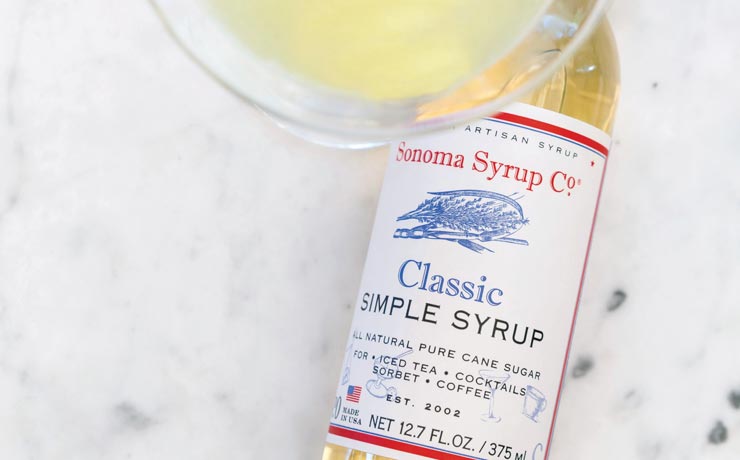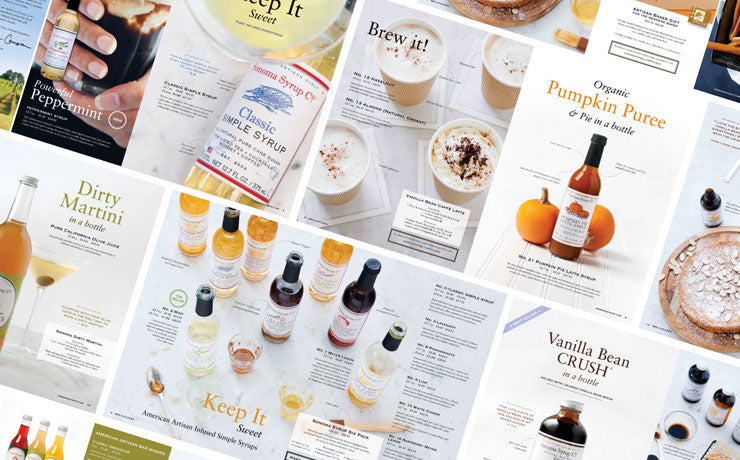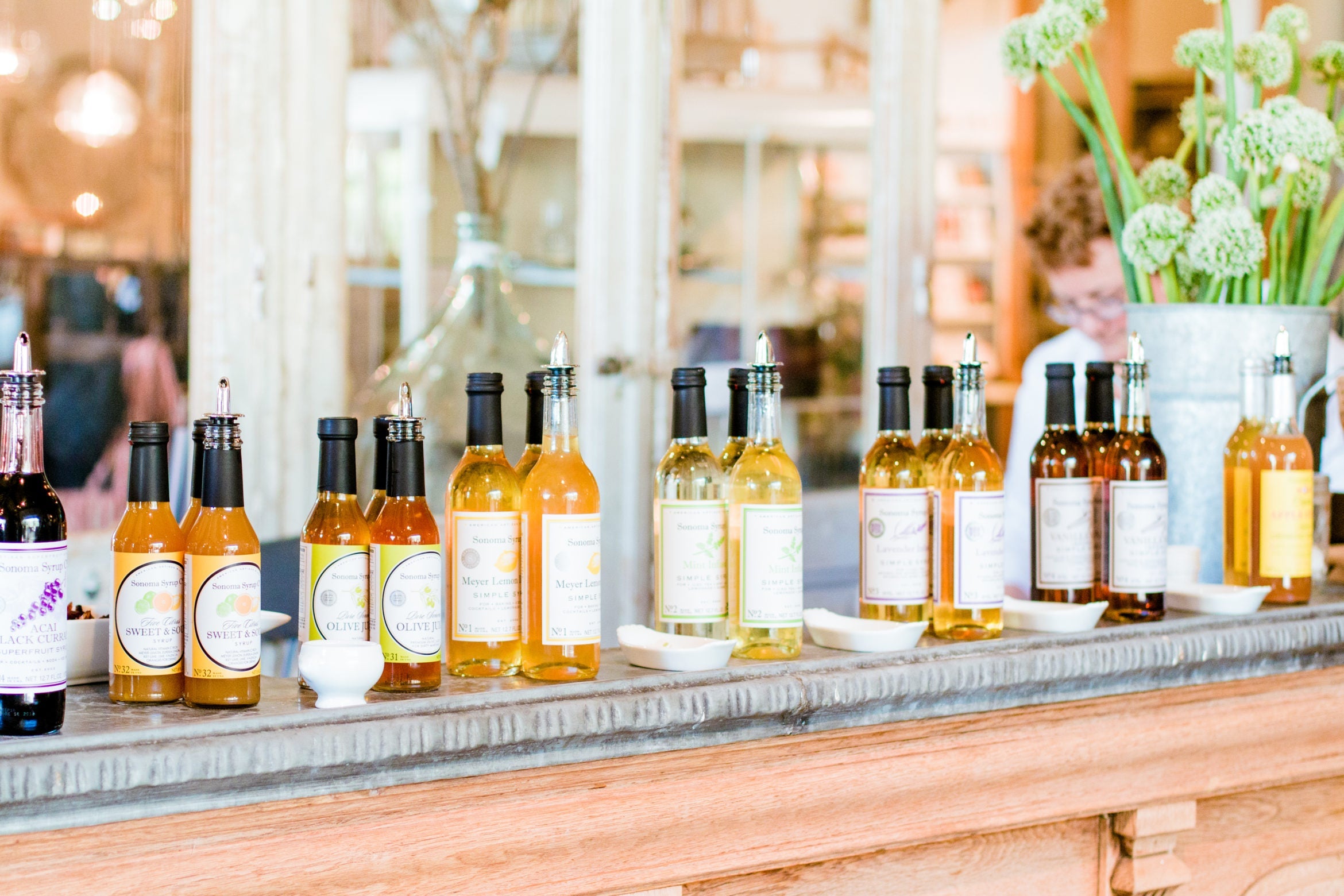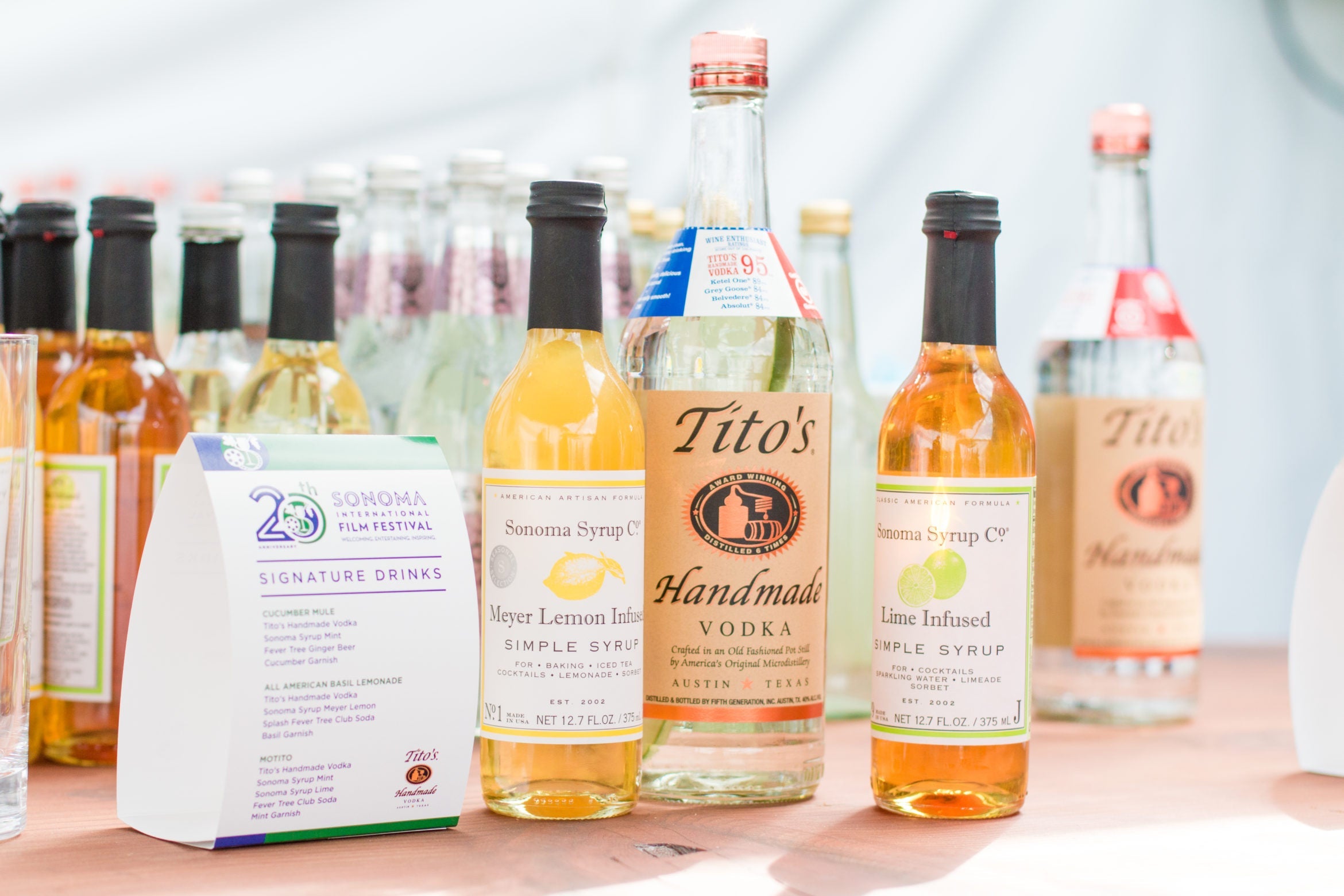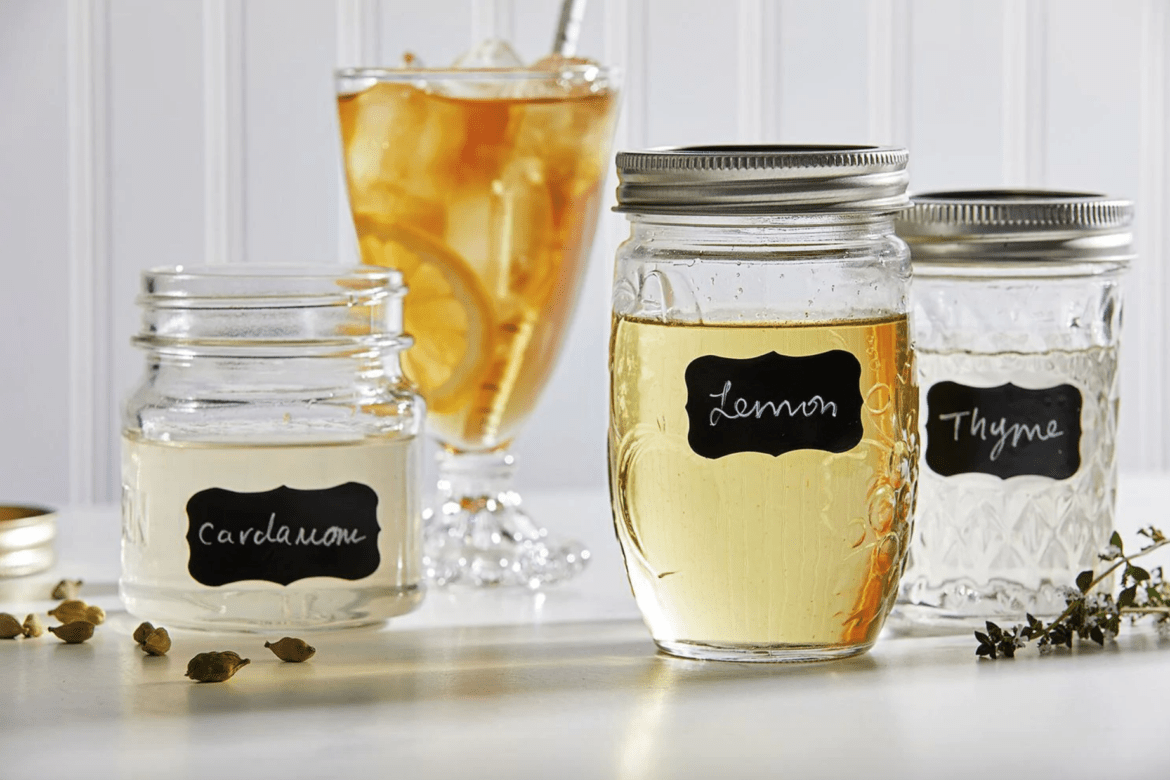
Making simple syrup really is easy. Here’s how to jazz it up with infused flavors.
(Photo by Tom McCorkle for The Washington Post; food styling by Lisa Cherkasky for The Washington Post)
The concept of simple syrup is, well, simple. Take equal amounts of sugar and water, cook and use as a sweetener. It is indeed quite simple to make, but the name almost obscures the many directions this ingredient can go.
“It’s really simple, and it’s a building block,” says Karin Campion, the founder of California-based Sonoma Syrup Co., which specializes in infused syrups in such flavors as pomegranate, white ginger and pumpkin pie latte.
Simple syrup can be one of your pantry’s most stealthy MVPs, adding intriguing dimensions to all kinds of dishes. Here’s how to get started in concocting your own creations.
Remember the ratio. It’s hard to forget the 1-to-1 ratio of water to sugar. You can, however, make it different densities, says Campion. A “rich” syrup features a higher ratio of sugar to water — 2 to 1, for example — to create a sweeter result that might be desirable for something like baking. You can also reverse the ratio for a higher proportion of water, which you may prefer in ice pops or seltzer. Adjust up, adjust down, it really doesn’t matter, as long as you’re happy with the level of sweetness. As far as batch size goes, I tend to stick to a range of 1/2 to 1 cup each of the sugar and water.
[Ice pops are a quintessential summer treat. Here’s how to make your own.]
Mix up the sugars. Many people will just reach for granulated sugar, which is absolutely fine! But Campion says other types of sugars can contribute additional dimension. That includes brown sugar, raw cane sugar, Demerara sugar, honey and even maple syrup. Campion has been playing around with coconut sugar, too. If you’re someone who sticks their spent vanilla beans in sugar to create vanilla sugar, now’s the time to use it (a few drops of vanilla extract added to the syrup mix can serve the same purpose).
[These are the 4 types of sugar even the most casual baker should always have on hand]
Pick your flavors. “It’s endless,” Campion says of the possible flavors you can create. My personal favorite is cardamom, so rake over your spice cabinet — cinnamon, star anise, nutmeg and even peppercorns are all fair game. Plunge the depths of your produce bins, too. Look for citrus (peel/zest and juice, which can replace some of the water in the ratio), herbs and ginger root. Other botanicals you may have lurking around, such as dried lavender, chamomile or hibiscus, would be lovely. Choose a single flavor to highlight, or create a blend. It’s up to you.
Bring it together. Assemble your sugar and water in a saucepan, give them an initial stir and bring to a boil over medium-high heat, stirring until the sugar dissolves. “The secret to simple syrup is actually cooking it,” Campion says, which is why she suggests leaving it on the burner for 15 minutes after reducing the heat to maintain a gentle simmer. That way you start to coax more flavor from the sugar. If you want to be precise, she recommends keeping the syrup at 320 degrees, which is right at the point that caramelization begins to happen. Anything above that, and you risk moving into caramel and candymaking territory.
If you are infusing your syrup with a hardier ingredient (cinnamon, cardamom, ginger, etc.), it can go into the pan from the beginning to really start pulling out its flavors. Campion recommends adding more delicate ingredients, such as herbs, after the syrup has come to a boil. Or, if you prefer, drop them into the syrup once you pull it off the heat. When you begin infusing will affect the strength of the flavor. Let the infusion rest off the heat for an hour, Campion says. Then strain out any solids, be sure the syrup is completely cool, and store in a clean jar or container for up to 2 weeks in the refrigerator.
Use it. Simple syrups are most obviously at home in any kind of beverage: Iced tea, cocktails and cold-brew coffee, which is where I’ve been using my cardamom syrup a lot. Feel free to skip the LaCroix and make your own flavored bubbly water, too. Use simple syrup as the basis for lemonade. It’s also a great foundation for sorbet or granita. Drizzle it over a pound cake, or brush it on the layers of a layer cake. Poach fruit in it. Try in vinaigrettes or marinades. Campion endorses adding it to whipped cream. In a fruit salad, it can lend a pleasing viscosity and mouthfeel while ensuring the sugar is more evenly distributed rather than clumping in a single spot. Drizzle over pancakes or French toast. Grind ice in your blender and shower it with syrup for a very classy snow cone.
[Sip your way through summer with a batch of homemade iced tea]
Don’t hesitate to experiment. Given that the two main ingredients are cheap and plentiful, there’s no reason to be afraid of letting your imagination run wild. It’s a low-risk, high-reward project. Campion, an architect by training who started dabbling in syrups as a hobby, encourages home cooks to see where the process takes them. “I don’t think they’re going to go wrong,” she says.
Need some inspiration on syrups to try or ways to use them? Check out these recipes from our archives.

(Tom McCorkle for The Washington Post; food styling by Lisa Cherkasky for The Washington Post)
Fresh Lemon Syrup. Perfect for cocktails, lemonade and fruit salad.

(Deb Lindsey for The Washington Post)
Any Citrus Tea Cake. Choose the pound cake and fruit of your choice.

(Deb Lindsey for The Washington Post)
Nectarine and Fennel Salad. Starring basil syrup.

(Deb Lindsey for The Washington Post; food styling by Kara Elder/The Washington Post)
Mint Daiquiri. Good example of how to use a rich syrup, made with Demerara sugar.

(Deb Lindsey for The Washington Post)
Rhubarb + Strawberry Granita. This uses a lighter syrup featuring rhubarb.

